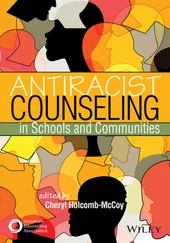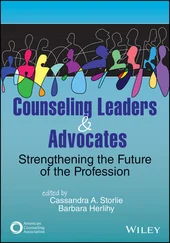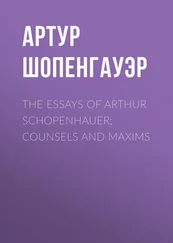Counseling and Psychotherapy
Здесь есть возможность читать онлайн «Counseling and Psychotherapy» — ознакомительный отрывок электронной книги совершенно бесплатно, а после прочтения отрывка купить полную версию. В некоторых случаях можно слушать аудио, скачать через торрент в формате fb2 и присутствует краткое содержание. Жанр: unrecognised, на английском языке. Описание произведения, (предисловие) а так же отзывы посетителей доступны на портале библиотеки ЛибКат.
- Название:Counseling and Psychotherapy
- Автор:
- Жанр:
- Год:неизвестен
- ISBN:нет данных
- Рейтинг книги:4 / 5. Голосов: 1
-
Избранное:Добавить в избранное
- Отзывы:
-
Ваша оценка:
- 80
- 1
- 2
- 3
- 4
- 5
Counseling and Psychotherapy: краткое содержание, описание и аннотация
Предлагаем к чтению аннотацию, описание, краткое содержание или предисловие (зависит от того, что написал сам автор книги «Counseling and Psychotherapy»). Если вы не нашли необходимую информацию о книге — напишите в комментариях, мы постараемся отыскать её.
Counseling and Psychotherapy — читать онлайн ознакомительный отрывок
Ниже представлен текст книги, разбитый по страницам. Система сохранения места последней прочитанной страницы, позволяет с удобством читать онлайн бесплатно книгу «Counseling and Psychotherapy», без необходимости каждый раз заново искать на чём Вы остановились. Поставьте закладку, и сможете в любой момент перейти на страницу, на которой закончили чтение.
Интервал:
Закладка:
Rather than thinking that there is only one theory that can help a client, consider that therapy from multiple theories may help the same client. The first question may be, are certain theories more or less appropriate given the circumstances and the client’s cultural intersectionalities? Second, how do those relate to how you, as a counselor, are able to work with clients? Examine the mechanism for how a theory creates change in a client’s life (e.g., through insight, behaviors, emotion, catharsis, or cognitions) and realize that success through one mechanism leads to changes in other aspects because growth is systemically interdependent. Thus, a transformative existential insight in therapy will likely cause secondary behavioral, relational, emotional, and systemic changes. Can you think of how you created a change in your life in one area, such as your thoughts, behaviors, relations, or in your bonding with others, that then created a ripple of secondary changes, and then tertiary changes? Adept counselors clearly understand the range of theories, mechanisms of change, and advantages to different systems of therapy even if they have a theoretical focus. Additionally, students of counseling often think that they are coming to the helping profession without personal, cultural, and familial notions of helping. Without thorough examination of different theories and techniques of helping, they may develop a therapeutic relationship and simply default to the ideas of helping from their family of origin. These are not necessarily wrong; however, mastery as well as helping diverse clients goes beyond a counselor’s default as a professional.
Some counselors-in-training initially try to apply attending, building rapport, and helping skills without a helping theory and find themselves lost in medium-and long-term work with clients. The study of theories will often be at the beginning of coursework for necessary growth and understanding throughout the program, but often it is taught before one works with clients, which makes the application of theory harder to understand. As a suggestion, they should review this book during their program as well as to guide their practicum and internship; in the meantime, they should examine how individuals, families, and groups change in their lives, and, of course, watch counseling videos from different theoretical lenses with current and culturally relevant scenarios. In this book, we have tried to make it as easy as possible to learn about available options to guide counselors’ and therapists’ preparation and actual work with clients. Because this is a foundations text for broad synthesis and introduction to various theories, we encourage counselors and therapists to find landmark resources, current adaptations, and new research to deepen their work in the theories they pursue.
Notice that each chapter from Chapters 2through 17addresses the theory under consideration using the same headings and subheadings; this enables the reader to compare concepts, areas of focus for follow-up when developing treatment plans, and the goals and techniques used to achieve preferred outcomes for clients. More important, all stages of work with a client must be theoretically aligned, even if there are core dimensions to a helping relationship. For example, viewing a case from a psychodynamic lens and then using a cognitive behavioral strategy or intervention will not work, let alone make sense. We will introduce how theories are integrated, because many are harmonious and the way that the case is conceptualized may allow for various theoretical strategies.
Before we turn attention to integration, much of this chapter will focus on factors that affect the helping relationship: definitions and descriptions, stages, core conditions, and strategies. In addition, we discuss multicultural and social/cultural orientations as a necessary element of counseling and psychotherapy from theoretical conceptualization to intervention.
DEFINITIONS AND DESCRIPTIONS OF THE HELPING RELATIONSHIP
Although agreed-on definitions and descriptions of the helping relationship should be easy to find, this is not the case. Despite the importance of this relationship in the overall helping process, a perusal of textbooks and articles dealing with counseling and psychotherapy shows the lack of a common definition and that many theories and applications were developed by White, Western, and cisgendered men. Any definition should be grounded in awareness of the intersectional nature of identity and adapt the relationship to the client; for example, with trans and nonbinary clients, this should be affirming of nonconforming gender identity, ongoing minority stress, and resilience (see dickey & Singh, 2020). Rogers (1961), in his classical and seminal work On Becoming A Person , defined a helping relationship as one “in which at least one of the parties has the intent of promoting the growth, development, maturity, improved functioning, and improved coping with life of the other” (p. 39). Okun (1992) stated that “the development of a warm, trustful relationship between the helper and helpee underlies any strategy or approach to the helping process and, therefore, is a basic condition for the success of any helping process” (p. 14). Sommers-Flanagan (2015) noted that “each mental health counselor will inevitably display therapeutic relational factors in unique ways that may be difficult for other practitioners to replicate, because anything relational or interpersonal is alive, automatically unique, and therefore resists sterile descriptive language” (p. 100). Sommers-Flanagan went on to recommend that counselors implement core relational attitudes and behaviors based on evidence-based practice principles (see Sidebar 1.1).
It is easy to see the difficulty in categorically stating an accepted definition or description of the helping relationship, regardless of which of the aforementioned statements one chooses to embrace. Nevertheless, despite the differences, each carries with it directions and directives aimed at a single goal: the enhancement and encouragement of client change. The following definitive characteristics of the helping relationship embrace this goal and describe our conceptualization of this relationship:
Sidebar 1.1 The Importance of a Constructive Therapeutic Alliance
One of the most important things a counselor or therapist (beginning or experienced) must provide to all clients is a safe and constructive therapeutic alliance. Whether the counselor or therapist follows the constructs of a specific theory or develops an integrative approach, the helping relationship must be established in a way that encourages client self-disclosure and motivation to establish and work toward the attainment of goals. No matter how much expertise a counselor or therapist has to contribute to the counseling process, the helping relationship must be established in a way that provides a safe and affirming holding environment so that the client can move toward greater self-acceptance and decision-making.
A relationship initially structured by the counselor or therapist but open to cooperative restructuring based on the needs of the client
A relationship that affirms the intersecting identities of the client
A relationship in which all persons involved perceive the existence of trust, caring, concern, and commitment and act accordingly
A relationship in which the needs of the client are given priority over the needs of the counselor or therapist
A relationship that provides for the personal growth of all persons involved
A relationship that provides the safety needed for self-exploration for all persons involved
A relationship that promotes the potential of all persons involved
The major responsibility in creating this relationship rests initially with the counselor or therapist, with increasing demands for client involvement and commitment over time. It is a shared process, and only through such shared efforts will this relationship develop and flourish. This development evolves in stages that take the relationship from initiation to closure. The stages in this evolving process are the subject of the following section.
Читать дальшеИнтервал:
Закладка:
Похожие книги на «Counseling and Psychotherapy»
Представляем Вашему вниманию похожие книги на «Counseling and Psychotherapy» списком для выбора. Мы отобрали схожую по названию и смыслу литературу в надежде предоставить читателям больше вариантов отыскать новые, интересные, ещё непрочитанные произведения.
Обсуждение, отзывы о книге «Counseling and Psychotherapy» и просто собственные мнения читателей. Оставьте ваши комментарии, напишите, что Вы думаете о произведении, его смысле или главных героях. Укажите что конкретно понравилось, а что нет, и почему Вы так считаете.












